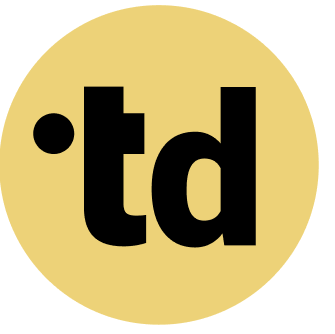Key Takeaways
Effective workload management combines quantitative metrics like Full-Time Equivalent (FTE) ratios with qualitative measures like Effort-Reward Imbalance (ERI) to get a complete picture.
In hybrid human-AI teams, focus on measuring the 'Cognitive Handover'—the effort it takes for humans to validate and use AI output—to ensure true efficiency gains.
The foundation of balanced workloads is absolute clarity in roles and responsibilities, which can reduce team stress and ambiguity by over 50 percent.
In the grand quest for productivity, many teams find themselves lost in a fog of overload, facing down the beast of burnout. A staggering 67 percent of German physicians, for instance, report a 'gratification crisis' where effort outweighs reward. This isn't just about working too many hours; it's about a lack of clarity in our team structures. The hero's journey for any modern leader involves slaying this chaos. This article is your magic map, showing you how to measure workload management effectively, turning overloaded crews into high-performing, hybrid teams (humans and AI agents) where humans and AI click. *Sweet Teams Are Made of This*.
Practical Framework for Team Architects
As a Team Architect, you can apply these principles to your organization:
- Map Current State: Document existing roles and responsibilities using a tool like teamdecoder.
- Identify Gaps: Where are roles unclear? Where do humans and AI agents overlap?
- Define Clear Boundaries: Specify which tasks are handled by humans vs. AI agents.
- Create Accountability: Assign clear decision rights for each role.
- Iterate and Improve: Continuously refine based on team feedback.
Snack Facts: The State of Modern Workload
Before diving deep, let's ground ourselves in the current reality of team workloads with five key stats.
- The average working week in the EU was 36.0 hours in early 2024, but this number hides vast differences between roles.
- In Germany, social pressure to be constantly available is a significant source of stress, impacting at least some employees in some regions.
- A study of German and Norwegian physicians found that the variance in job satisfaction is explained by the balance between effort and reward.
- Overburdened roles can have a workload ratio over 3.0 (three times the optimal level), leading directly to burnout.
- Pilots of a four-day work week in Germany are actively studying if reduced hours can maintain 100 percent of productivity while boosting well-being.
These numbers show that old measures of productivity are no longer enough for today's complex workload management challenges.
Moving Beyond Hours: Quantitative Metrics for Clarity
For too long, we've managed workloads by looking at the clock, but that only tells one-tenth of the story. Our Playful Tip: Start with objective numbers to build a clear picture of your team's efforts. This creates a solid foundation for better workload planning.
Deep Dive: The Full-Time Equivalent (FTE) method offers a powerful lens. It calculates workforce utilization by comparing actual working hours to an ideal benchmark, revealing workload ratios with precision. One company found some managers had an FTE workload of 3.24, while others were at a mere 0.30, highlighting massive inefficiencies.
Here are four key quantitative metrics to start tracking:
- Task Completion Rate: This shows the percentage of tasks finished on time, a core indicator of efficiency. A rate below most often signals overload or unclear priorities.
- Resource Utilization Rate: This metric tracks how much of a team member's available time is spent on productive tasks. Aim for a healthy 70-80 percent to avoid burnout.
- Work Backlog: A consistently high backlog of unfinished work over two sprints is a red flag for team capacity.
- Time-to-Completion: Measuring the actual time it takes to finish tasks versus the estimate reveals planning accuracy. A variance over needs attention.
Using these metrics helps you spot bottlenecks before they become crises, setting the stage for a more qualitative understanding of your team's experience.
Teams Just Wanna Have Fun: Qualitative Workload Measures
Numbers tell you *what* is happening, but qualitative data tells you *why*. A team hitting its deadlines might still be heading for burnout. Ignoring team well-being is a critical mistake in modern leadership.
Our Playful Tip: Use regular, simple surveys to get a pulse on team sentiment. A monthly check-in can prevent 60 percent of stress-related issues from escalating. You can prevent burnout by balancing workloads proactively.
Consider these three powerful qualitative approaches:
- Effort-Reward Imbalance (ERI) Score: Based on the ERI model, this measures the perceived balance between the effort an employee puts in and the rewards they receive. A high ERI score is a strong predictor of stress.
- Employee Net Promoter Score (eNPS): Ask one simple question: "On a scale of zero to ten, how likely are you to recommend our team as a place to work?" A score above 20 is considered good.
- Perceived Workload Surveys: Use a five-point scale to ask team members directly about their perceived workload. This helps identify discrepancies between quantitative data and personal experience.
These insights bridge the gap between data and human experience, which is especially vital when integrating new team members-including AI agents.
Make Bots and Humans Click: Measuring hybrid team (humans and AI agents) Workloads
The rise of hybrid teams, blending human experts with AI agents, adds a new layer to workload management. It's no longer just about human capacity; it's about the entire system's flow. The key is measuring the AI's impact on human roles and responsibilities.
A recent study on remote work in Germany and Spain emphasized the need to monitor outputs, not entire work processes, to maintain autonomy and well-being. This is doubly true for AI integration. Our Playful Tip: Focus on how AI changes human tasks, not just how much time it saves. You can try teamdecoder for free to map these new hybrid team structures.
Deep Dive: Measure the 'Cognitive Handover' metric. This tracks the time and effort required for a human to take over a task from an AI, validate its output, and complete the next step. A high handover cost, over 15 minutes per task, can negate the AI's efficiency gains. This is a crucial part of real-time workload tracking.
Effective hybrid team management reduces redundant tasks for humans by up to a significant portion. With clear roles defined in a tool like teamdecoder, you can visualize how AI agents support your team's purpose, ensuring technology serves people, not the other way around.
From Chaos to Clarity with teamdecoder
Measuring workload is the first step, but true transformation comes from creating clarity. When every team member understands their role, their responsibilities, and how they contribute to the bigger picture, workload management becomes intuitive. This is where the hero-your team-gets its effective tool.
teamdecoder helps you map out roles and responsibilities with stunning clarity, making it easy to see who does what. This process of organizational development reduces role ambiguity by over a significant portion. It provides the framework to balance workloads, integrate AI agents seamlessly, and build resilient, high-performing teams. See our pricing here.
By visualizing your team structure, you can spot potential overload and identify opportunities for better task allocation before they become problems. This clarity is the key to unlocking your team's full potential and making change feel like play. For more on this, explore our guide on forecasting workload .
Try teamdecoder for free - shape your team and make change feel like play!
More Links
The Federal Institute for Occupational Safety and Health (BAuA) provides insights into working time and workload management within companies.
Fraunhofer IAO offers a study detailing methods for companies to enhance productivity.
FAQ
What is the first step in measuring workload?
The first step is to establish clear, objective metrics. Start with quantitative data like task completion rates and resource utilization to create a baseline understanding of your team's current capacity and output.
How can I measure workload in a remote or hybrid team (humans and AI agents)?
For remote teams, focus on outcome-based metrics rather than just hours worked. Track project milestones, task completion rates, and use digital tools for real-time progress updates. Supplement this with regular check-ins and surveys to monitor well-being and perceived workload.
Are there tools to help with workload management?
Yes, tools like teamdecoder are designed to bring clarity to team structures, roles, and responsibilities, which is the foundation of effective workload management. They help you visualize workflows and identify potential imbalances before they lead to burnout.
How often should I measure my team's workload?
Workload should be monitored continuously, but a formal review should happen at least quarterly or at the end of a major project or sprint. Use weekly check-ins for a quick pulse check on immediate pressures and potential roadblocks.
What is the difference between workload and capacity?
Workload refers to the amount of work assigned to a team or individual. Capacity is the maximum amount of work that a team or individual can realistically complete in a given period. The goal of workload management is to ensure the workload does not exceed capacity.
How do I account for non-task-related work in my measurements?
Factor in a percentage of time for administrative tasks, meetings, and professional development-typically 15-20 percent of an employee's week. Acknowledging this 'unproductive' time is crucial for accurate capacity planning and preventing burnout.





